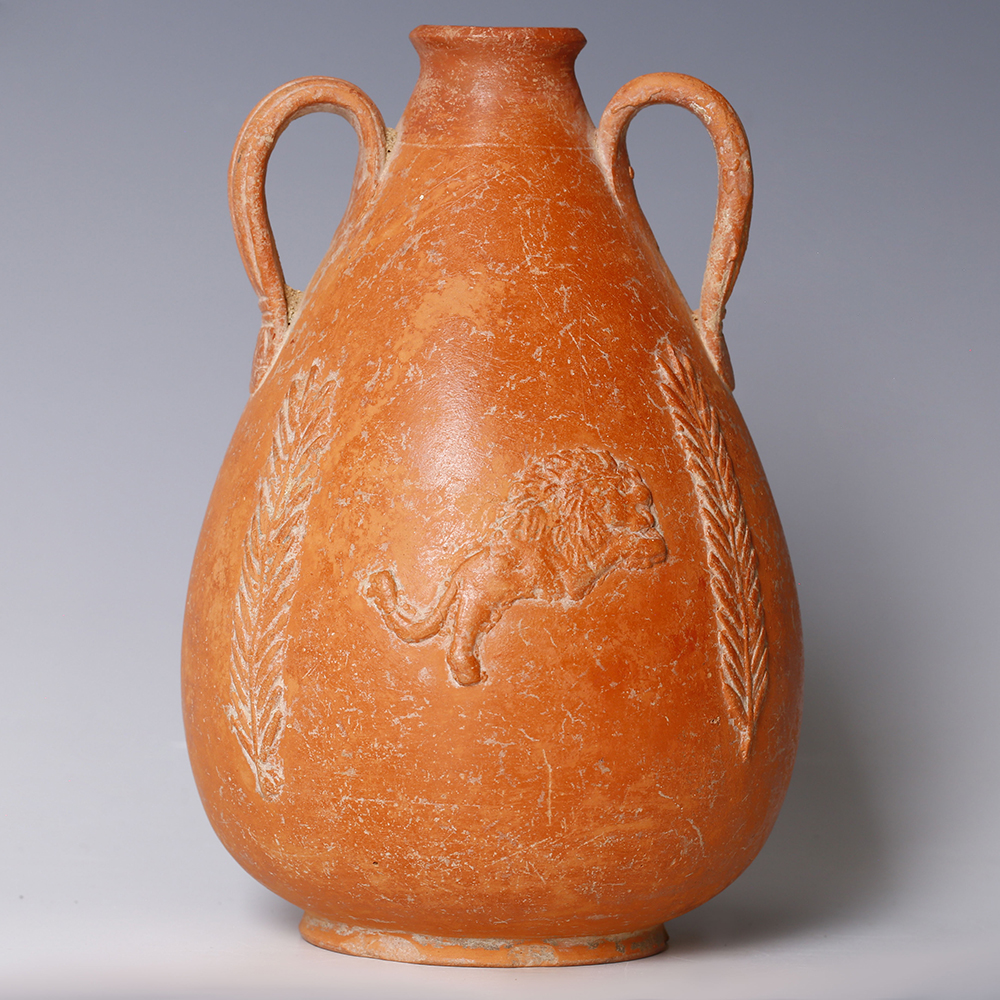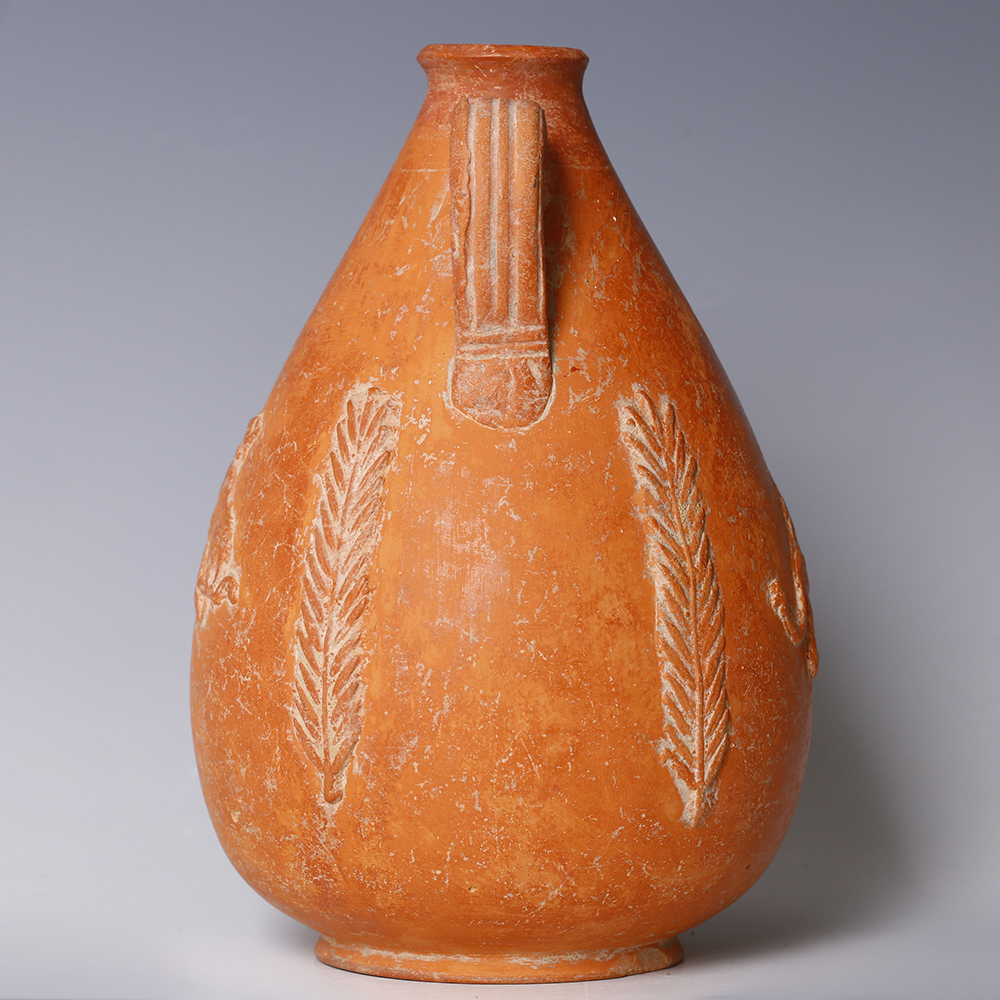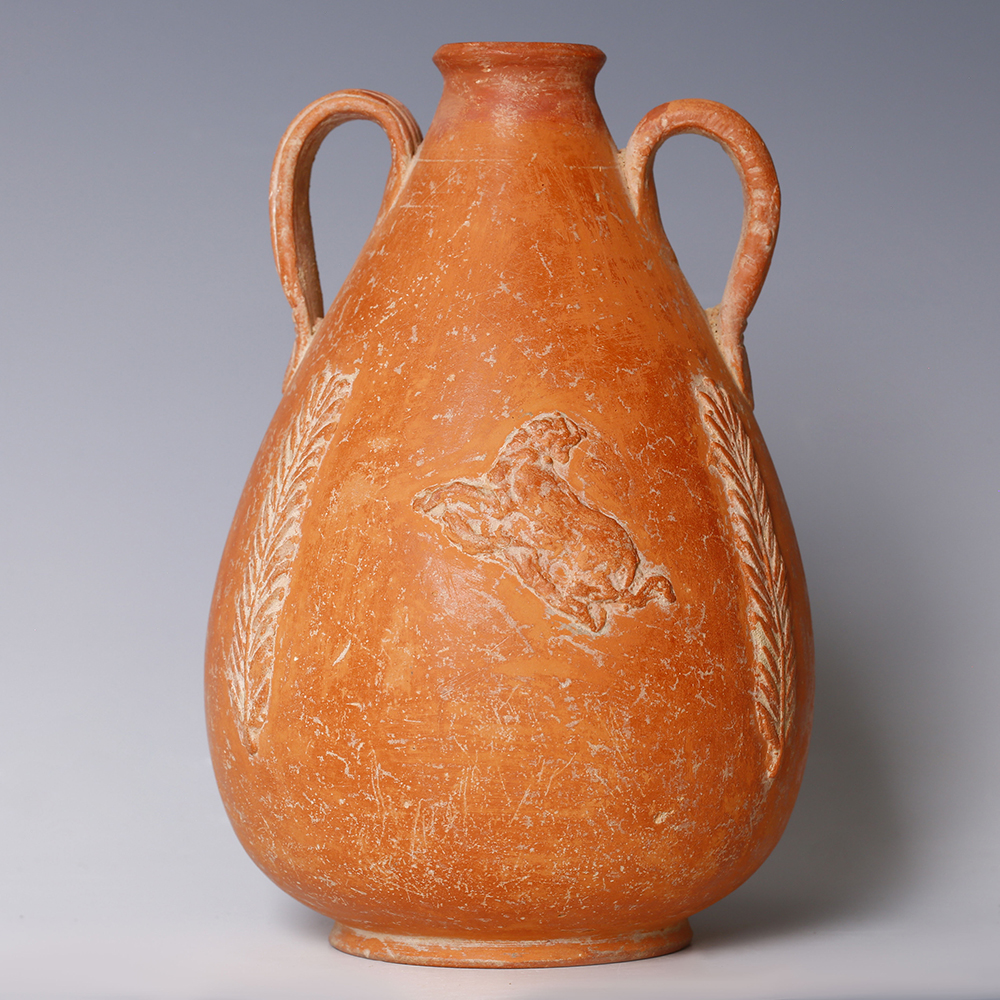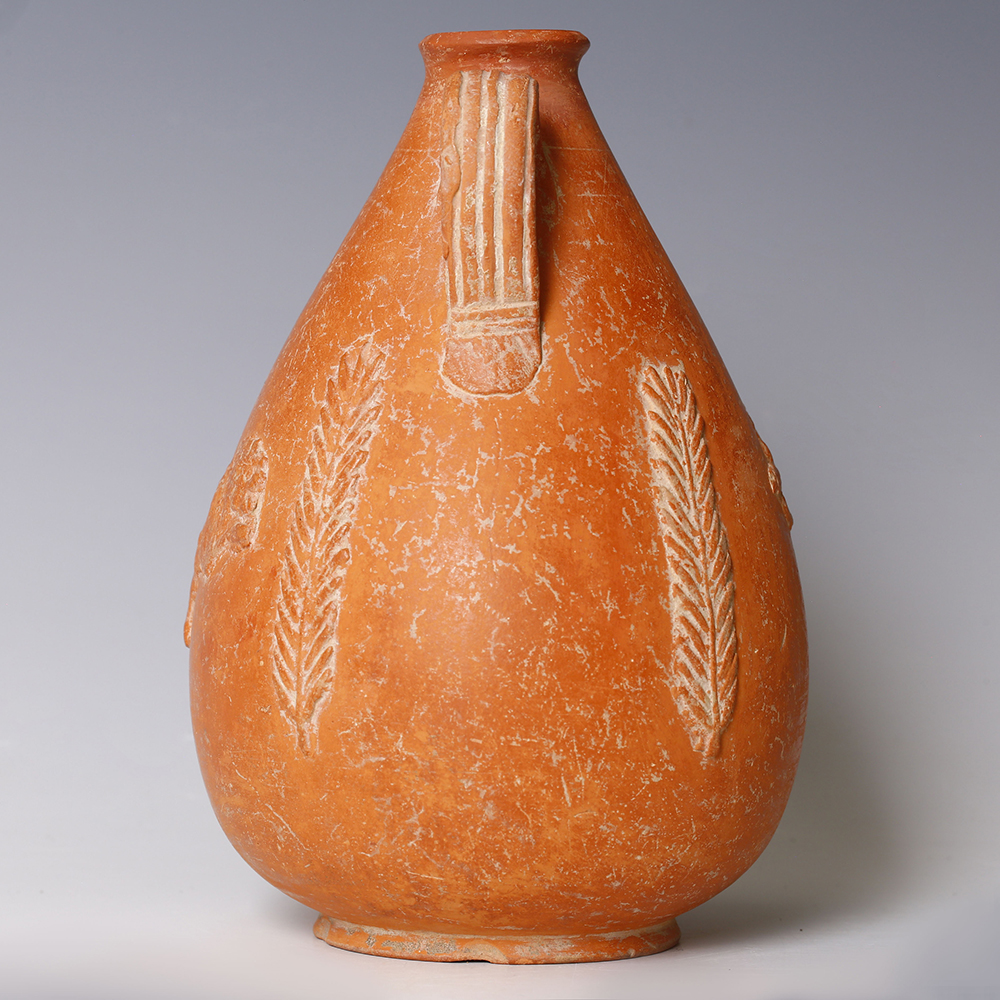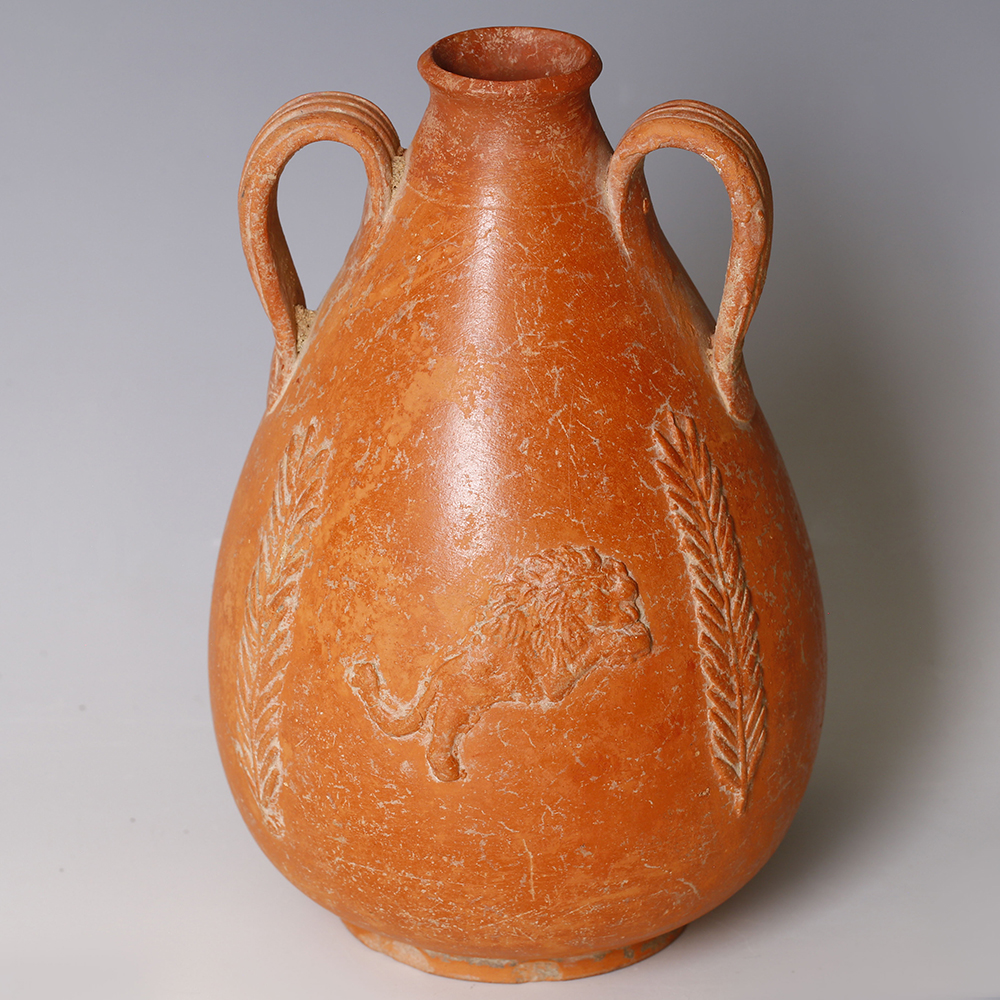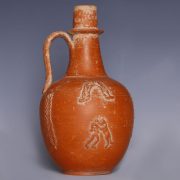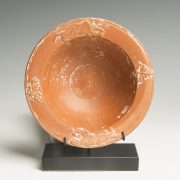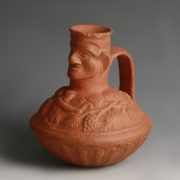Wares of this type are usually referred to as African Red Slipware, and they were specific to the African province of the Roman Empire. Most pottery workshops are known from modern Tunisia and Algeria, and they were active from the 1st century until the 7th century AD. African Red Slipware is identified as the final development of terra sigillata, from the Latin, meaning ‘sealed earth’.
Terra sigillata was a form of Roman red slipware pottery, which was developed around the mid-1st century BC, both for domestic use and export. These pieces were modelled on the lathe directly in the matrix, on which decorative motifs were hollowed out and then impressed on the smooth body of the vessel, appearing therefore in relief. Sometimes the decorative motifs in relief would have been applied to the vessel by using a very thin, liquid clay. One of the most important centres of production was the Italian city of Arretium (modern day Arezzo). However, terra sigillata wares were produced also in Gaul and later in North Africa and Asia Minor. Terra sigillata vessels were often decorated in accordance with traditional Greco-Roman tastes, presenting images of classical mythology, hunting scenes and divine figures.
